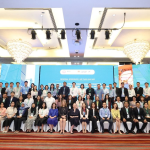Total number of posts 463.
ASEAN countries, including Viet Nam, are facing intense competition due to a surge of low-cost Chinese goods flooding domestic markets. As the U.S. and EU reduce imports from China, the country has increasingly shifted its exports toward ASEAN. Key industries such as textiles, electronics, and automotive in several ASEAN states have reported mass layoffs and factory closures. In addition, China’s growing investments in electric vehicles and renewable energy pose risks of technological dependence and unfair market dominance. There comes the call for a balanced approach between trade liberalization and protecting domestic industries as well as further leveraging regional frameworks like RCEP and the ASEAN Economic Community (AEC) to promote sustainable and equitable growth.
Recent global developments cause concern over the economic shifts within the ASEAN region, as member states encounter intensified competition stemming from an influx of Chinese exports. This trend, dubbed by regional analysts as a “second China shock,” is exerting pressure on domestic manufacturing industries across Southeast Asia.
Following ongoing economic rebalancing by major global economies such as the United States and the European Union, China has increasingly redirected its exports toward the Global South—particularly ASEAN. In 2024, China’s exports to ASEAN surpassed those to either the U.S. or EU, accounting for 16.4% of its total export volume.
Viet Nam, alongside peers such as Indonesia, Thailand, and Malaysia, is witnessing a significant rise in lower-cost Chinese imports in sectors including textiles, electronics, and automotive parts. These developments have placed local enterprises, especially small and medium-sized manufacturers, at a competitive disadvantage.
Recent data indicate job losses and factory closures in neighboring ASEAN states due to Chinese goods crowding domestic markets. In Indonesia, over 80,000 textile workers were laid off in 2024 alone, while Thailand reported a monthly amount of 100 factory shutdowns during the period of 2021-2024. Although Viet Nam has remained resilient in some sectors due to its robust export structure and strong FDI base, several domestic producers in low-margin industries are reporting increased pressure.
At the same time, China’s investment in ASEAN, particularly in electric vehicle (EV) manufacturing, battery supply chains, and renewable energy, is rising, i.e. the BYD EV factory in Thailand and CATL’s Nickel project in Indonesia. While these investments contribute to ASEAN’s green transition goals, they also raise concerns about market dominance, price wars, and deflationary spillovers.
In Thailand, for instance, EV price competition has intensified, prompting both production cutbacks and downward price revisions. Viet Nam is monitoring similar trends and remains vigilant in preserving a level playing field for local EV producers.
This situation calls for a balance between economic openness and strategic industrial development. In case of Viet Nam, in line with Viet Nam’s commitments under the ASEAN Economic Community (AEC) Blueprint and the Regional Comprehensive Economic Partnership (RCEP), the country supports enhanced cooperation on non-tariff measures, investment screening, and technical regulations to ensure fair and sustainable growth across the region.
As ASEAN economies strive toward deeper integration and resilience, it is crucial to ensure that the region’s economic dynamism is not undermined by structural shocks or external overdependence.
Source: Multilateral Trade Policy Department














